Is Batman Harmful to Gotham City?
DotDotDot 002
Let’s get this one thing out of the way upfront: despite the title being posed as a question, I think the answer must be “no,” just because of the nature of the character. In short, if we say Batman is doing more harm than good then we’re saying he’s not a hero, and that’s just not going to fly. In that sense, the answer is dictated by the context in which it’s asked.
That said, the self-evident answers to these types of questions can sometimes be hard sells. The biggest example of this is probably the discourse around whether Batman should kill, or specifically whether he should kill the Joker. The argument goes, sure killing is bad, but the Joker is so destructive, so irredeemably horrible that there’s no justification for keeping him around and if you do so, you’re essentially complicit in his crimes. And this is a difficult one to address because letting him live really requires backwards justification since the real reason Batman won’t kill the Joker is that the Joker is the most popular villain in comics.
Similarly, the reason he can’t stop being Batman and dedicate his billions to social improvements is really that a comic about Bruce Wayne building orphanages and setting up college funds isn’t a good read or a strong basis for an action film. Anything else is just a way to make his choice to be a vigilante instead of a community organizer or politician look good enough to help people willingly suspend their disbelief.
But that doesn’t mean we can’t check those questions and answers for weaknesses. And, since the current Magistrate storyline running in the Gotham line does bring this question to the forefront, let’s take a second and think about it seriously.
The Argument
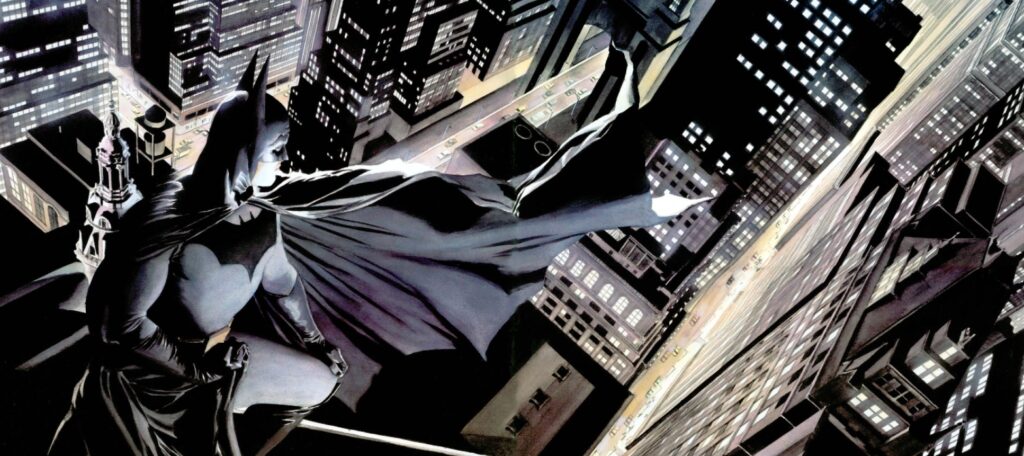
So, Gotham is a mess of a city. By all accounts it was a mess before Batman got there – even before Bruce got there. The question of why that is, however, varies from account to account; some versions just attribute it to the drift toward corruption to which some cities fall prey, while others suggest that the city is literally cursed. More on that last part later.
Either way, we have this city that is full to bursting with dirty police and politicians, and shadow-run by mob bosses – a city so teeming with danger that even the richest people on the planet can’t walk through a ritzy neighborhood without getting shot by a mugger. Once the Waynes, seemingly the only prosocial rich people in the city, are gone, Gotham just gets worse. The formerly glamourous Park Row becomes Crime Alley, the Falcone mob rises to power and soon Jim Gordon is the only honest cop in the city—and he’s a transfer from Chicago.
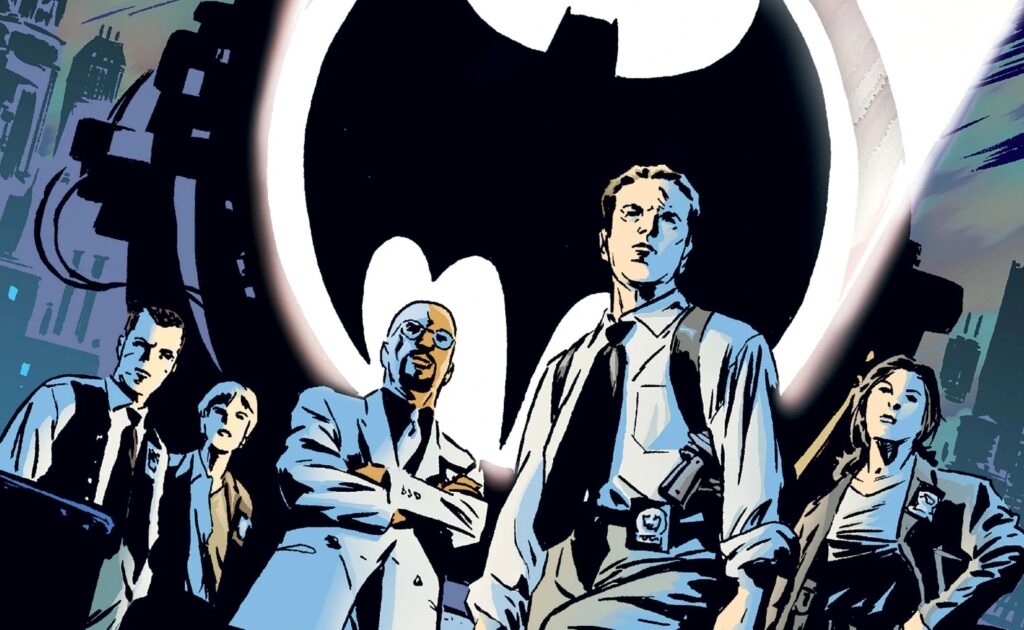
That’s the situation into which Batman is “born” – he’s a response to the fact that that there is no legal way to address the problem even for someone with the power and influence of a Bruce Wayne. The cops, the elected officials and the judges are all bought and paid for – the legal system in essence doesn’t exist, at least not in any functional form. But then there’s Batman, who steps outside of the system and thus evades criminal control. Ultimately, it’s the success of his independent action that begins to create pockets of hope and inspire increasing numbers of law enforcers and officials who see a future for Gotham that isn’t all about submission to criminals.
That’s all well and good but the downside becomes evident when his presence starts to inspire the famous rogues to make their appearances. Suddenly it becomes a more complicated question because… sure Gotham was corrupt and dangerous, but no one was dumping smile-inducing poisons into the water supply until Batman turned up, so… is it Batman who brought them there? Is it his fault?
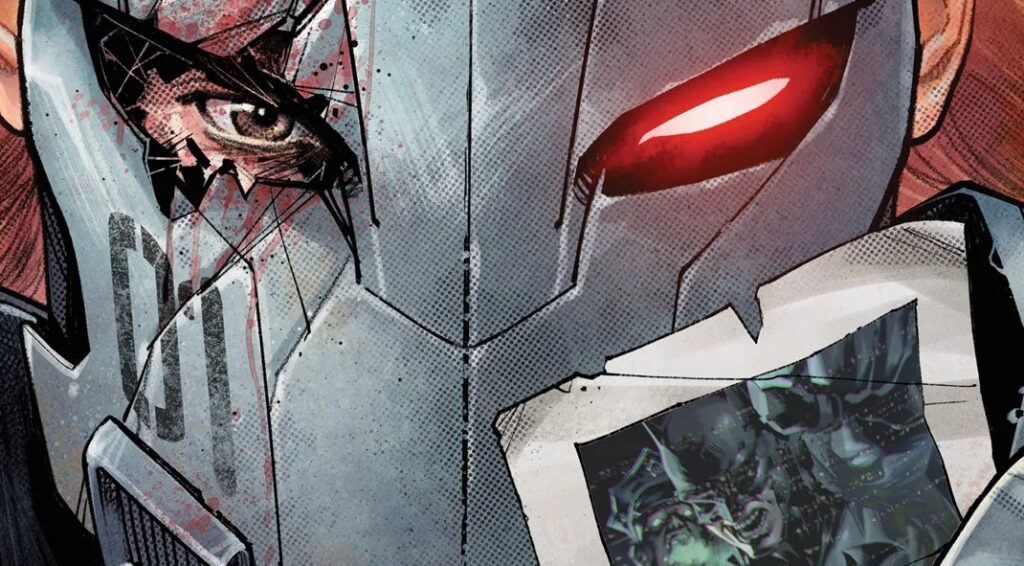
This is essentially the argument made by Sean Mahoney (Peacekeeper 01) in Batman 110 – the old system was janky but it worked in its own way. Now it doesn’t work at all, largely because there’s murderous clowns on every corner and Santa Priscan megacriminals setting up their own fiefdoms through brainwashing, and it’s just terrible, really bad, and it’s all been inspired by Batman’s presence.
The Gotham TV show gets around this by bringing the villains to the forefront when Bruce is still a child such that it’s ultimately their bizarre and over the top behavior that forces Bruce to determine that legitimate means are never going to work – he must meet them where they live. It works in its own way, but it’s also the exception rather than the rule. What’s more, it does create another big question: how could Bruce react to Gotham becoming much more dangerous and volatile by going away for 10 years? It’s one thing when the city he’s leaving behind is unjust but functional and another when the Joker has already made his first appearance. Or three.
In essence, whether the rogues created Batman or Batman created the rogues, you’ll run into Some Issue.
What Became of the Old Mafia Kings

As previously mentioned, the arrival of Batman on the scene signaled the beginning of the end for the days of Mafia supremacy in Gotham… but that doesn’t mean organized crime has disappeared. Even now we occasionally see mentions of the old families, and there’s certainly no dearth of new families or criminal organizations still operating.
That’s only natural – organized Crime was – and to some extent still is – the heart of Gotham’s violence problem. And the thing about this group is, it hasn’t really changed in function, just in form. When Batman arrived and started dismantling the old mafia families’ power, it didn’t cause Gotham to become a crime free utopia, obviously – instead, it created power vacuums that others were all too happy to fill. Here we see the rise of less traditional but still organized syndicates that form around a unifying theme or, more frequently, a single powerful personality – generally one of the new crime lords making use of more elaborate and gimmicky presentations.
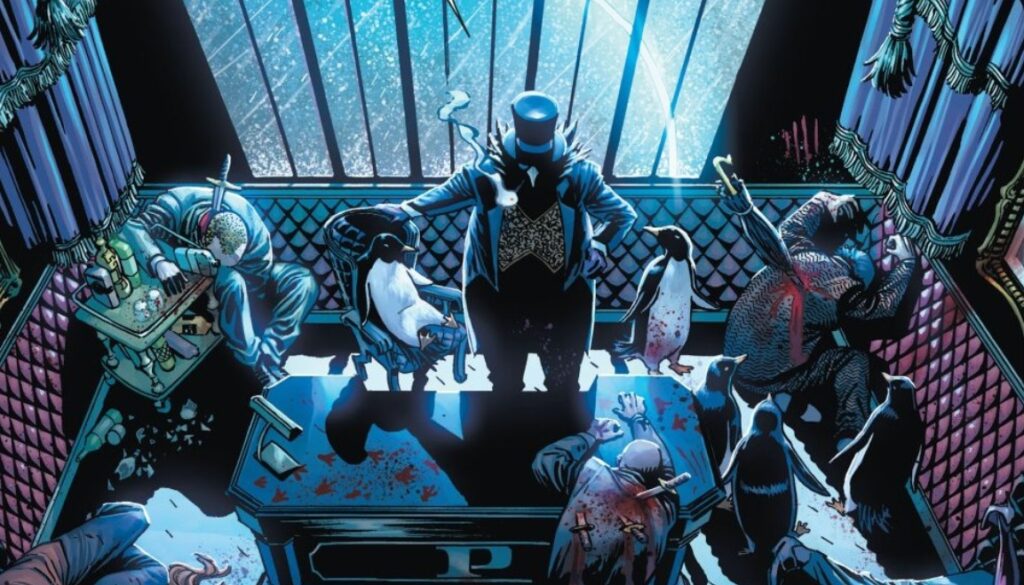
And that does make some sense. If the Gotham underworld is living in fear of a man shaped like a Bat, there’s power to be had in the creation of a competing image and at least the appearance of an equally forceful personality. This may help explain why many of the most powerful organized crime families operate almost like a cult. It also helps explain why many of the most powerful bosses end up becoming aggressive toward Batman (among others) personally, at least while they’re coming up. After all, if they can’t demonstrate that they aren’t afraid of the Bat, why would anyone follow them?
The Penguin and Black Mask are probably the most notable – or at least the most consistently powerful – in this category, with each having seized control of the bulk of Gotham City’s underground on various occasions. Two-Face has also fallen into this group at times, though he is more difficult to pin to a single category for, well, obvious reasons.
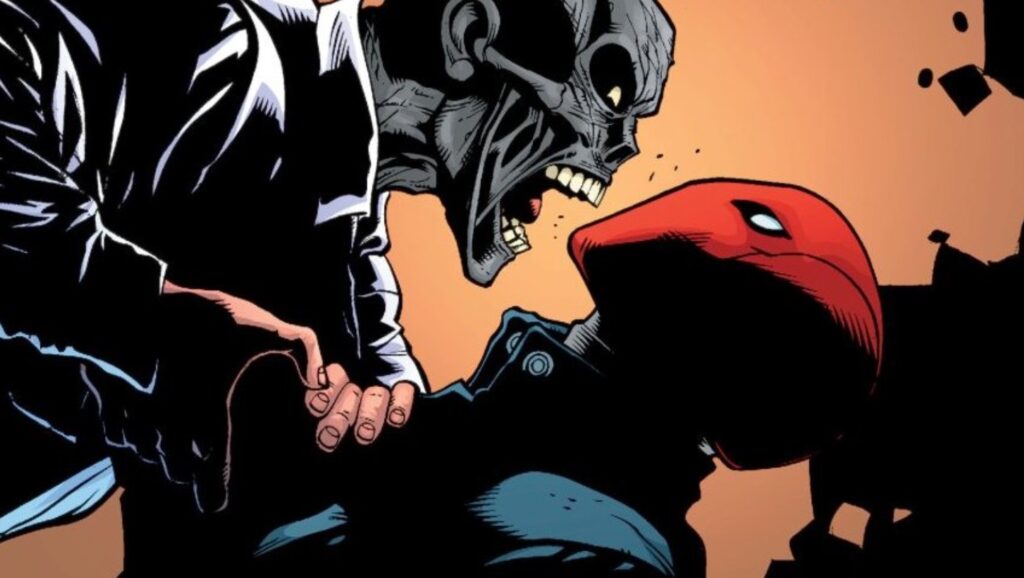
In short, organized crime becomes more elaborate, and their leaders become more physically aggressive – mostly toward Batman and his allies – rather than existing solely as godfather figures. It’s hard to imagine Carmine Falcone throwing down with Red Hood or attacking Batman with trick umbrellas, but this new breed of boss is all too happy to do so – at least while they’re coming up.
The thing is, though, it’s hard to say that these gangs are any more dangerous than the old breed. They don’t have the same deep-seated power over the system. While their leaders are certainly more direct, if anything, the bosses’ tendency to go full supervillain ends up backfiring when Batman inevitably kicks their butts and puts them back in prison. Slowly, the underworld learns to fear Batman more than they fear the bosses he keeps defeating… and the population can feel the release of the grip on its collective throat.
Batman’s presence has essentially broken uncontested reign organized crime once had over every aspect of the system, making it possible to bring prominent figures within these organizations to justice.
Let’s All Remember That Gotham City is Haunted
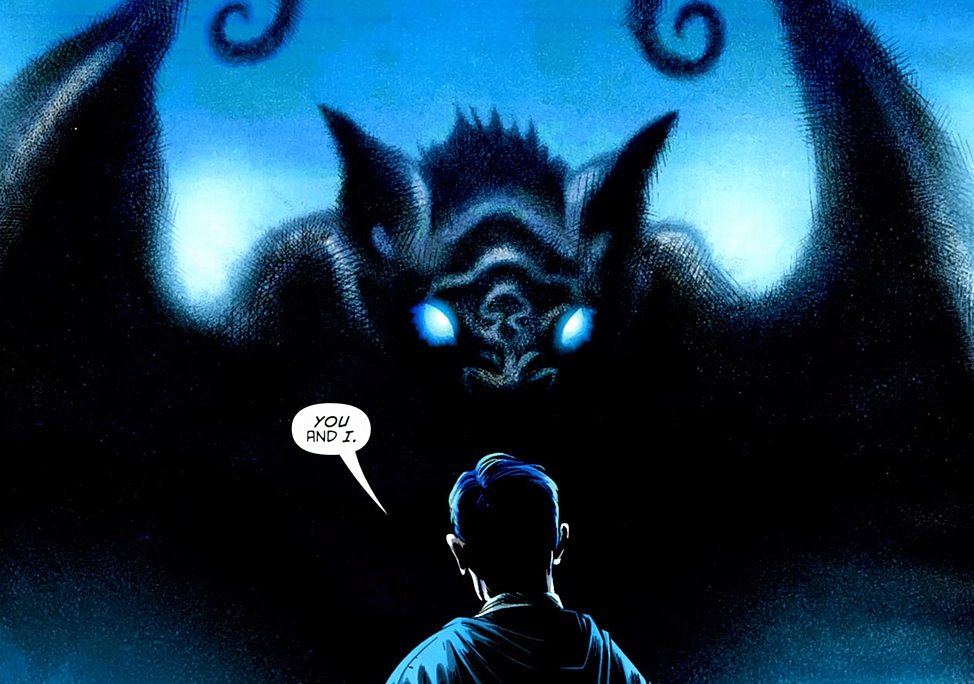
Despite the general perception of Gotham City as a basically mafia-ridden street level nightmare, there’s no denying that Gotham is also very strange.
Case in point: whatever is going on in Slaughter Swamp.
In the late 1800s, Cyrus Gold was some sort of difficult or criminally inclined person who was murdered and dumped in the Slaughter Swamp just outside Gotham. Accounts of what followed differ, but generally, his body sort of gestates there for a while until it eventually rises as a lumbering zombie with superhuman strength who can never truly die. Grundy is among the most dangerous residents of the Gotham City area for certain, and he’s clashed repeatedly with both Batman and his various allies despite having very little actual motivation most of the time.

Another, less supernatural example would be the metahuman wildcard Killer Croc. Waylon Jones starts out as a normal – if unusually strong and durable – man born with physical disfigurements that gave him a reptile-adjacent appearance. That made him an outcast and drove him first to the fringes of society and then to a life of crime. Eventually he developed an increasingly bestial appearance and become stronger, more dangerous – this is attributed to some serum or drug. But regardless of why, the end result is the same: due to is society’s inability to embrace the “other” Waylon is driven into the darkness, like the Phantom of the Opera, where he becomes a threat wholly created by the cruelty of humanity.
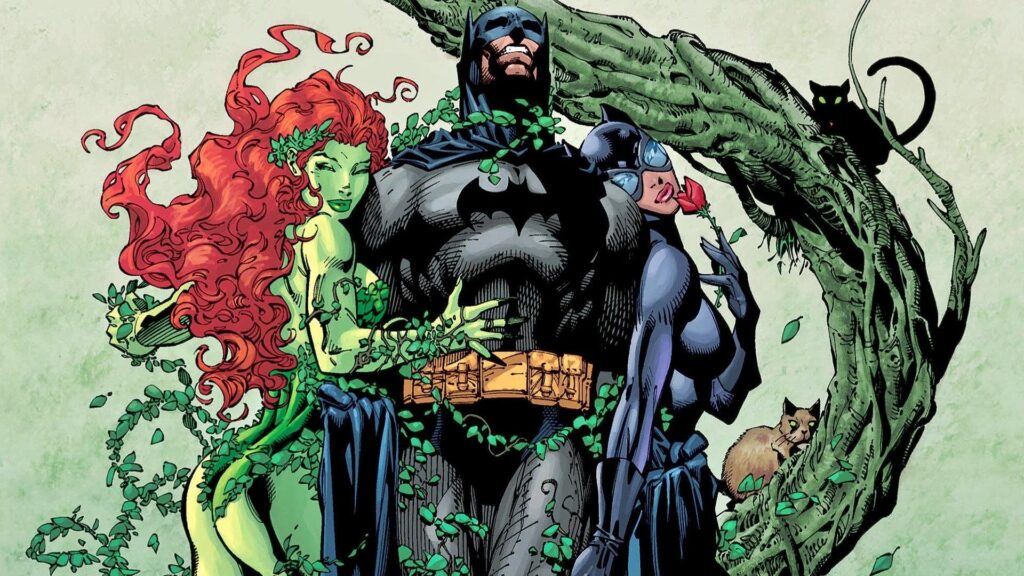
There are other examples of these oddities – Pamela Isley’s transformation into the faux plant elemental Poison Ivy comes to mind. This being the DCU, these are things that could happen regardless of location – it’s not like no one’s ever been turned into a zombie without Gotham’s involvement.
However, even in-world, the frequency of these occurrences within Gotham has been recognized as unusual. That brings us to the question of Gotham itself. Over the years there have been numerous origin stories told for Gotham, but a strong common theme between them is this idea that Gotham is haunted or cursed with that taint built into its very foundations.
One of the earliest explanations can be found in the 1990 four-part arc Dark Knight, Dark City by Peter Milligan and Kieron Dwyer that ran in Batman 452-455. This story suggests that a secret demon worshipping cult (including, for no real reason that I can find, Thomas Jefferson) attempted to summon and subjugate the demon Barbathos – who would later become an integral part of both Grant Morrison’s and Scott Snyder’s Batman runs under the slightly altered name Barbatos.
Whatever their initial intent, a problem arises when the summoners are scared off by an enormous bat. Unfortunately, this happens only after they’ve already contacted Barbatos who, trapped in a cellar beneath the land that came to be Gotham City, spread his corruptive influence through the area… resulting in the Gotham we know. Also linked to Barbatos is the Court of Owls, a powerful alliance of Gotham’s elite families that sits at the center of much of Gotham’s troubles.
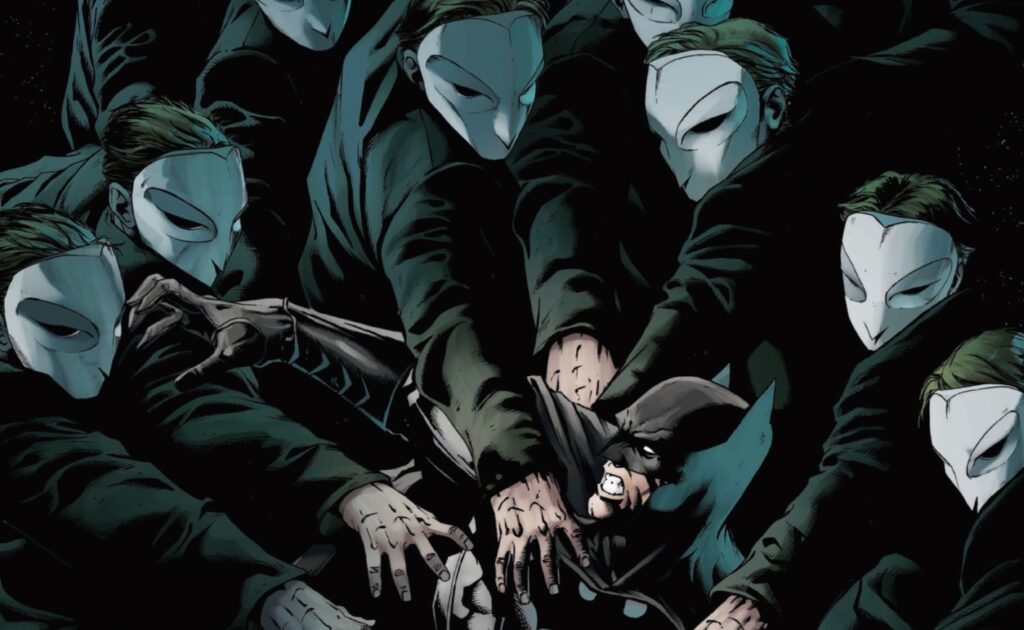
A later take, which took place chronologically earlier, was explored in the Bill Willingham series, Shadowpact. Here, we learn of the 40,000-year sleep of Dr. Gotham. This powerful sorcerer, whose true name is unknown, rested belowground on the East Coast of what would become North America for ages, his darkness seeping into and influencing the minds and development of the city that rose to power with his tomb in the center.
Another take, featured in Denny O’Neil and Curt Swan’s 1996 story “Cityscape” from Batman Chronicles #6, reveals that Gotham’s founding building was an insane asylum established under duress from a serial killer who yearned for a place to house his “brothers” in madness.
These disparate stories can work together rather cleanly – Dr. Gotham goes to rest io 40,000 years ago with his power and influence eventually drawing both the cabal of demon summoners and the attention of a killer searching for a home. As such, each event just compounds the effect of the last until we come to Gotham as it exists today.
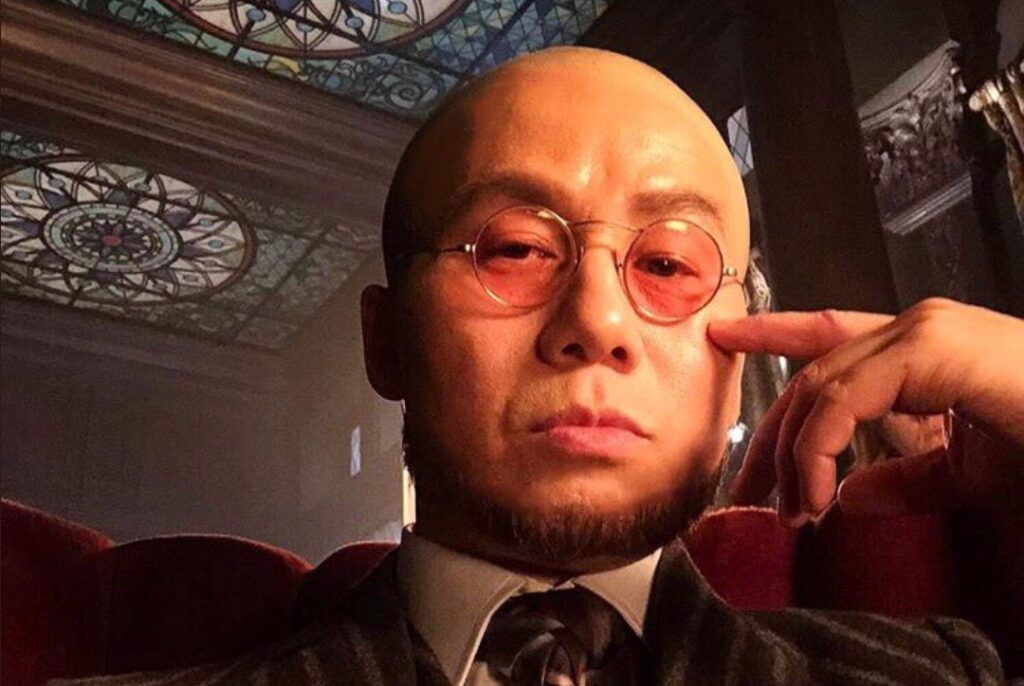
There have been other explanations, as well. In the television show, Gotham, Hugo Strange’s experiments on the patients at Arkham have contributed to the city’s violent offenders problem. In the Arkham series of games, it is the chemicals of the Lazarus Pit that are to blame, having seeped into the ground and water of the city… and so on and so forth. In the end, the usual implication is the same: Gotham is the way it is for a reason, and that reason is something beyond human control, arising from something darker than mere human corruption. This applies not only to the obvious supernatural threats but also characters like Ratcatcher or Ventriloquist – “normal” people who are nonetheless either drawn to Gotham because of its “wrongness” or twisted by the Gotham’s influence until they become the rogues we know so well.
So, what does this have to do with Batman?
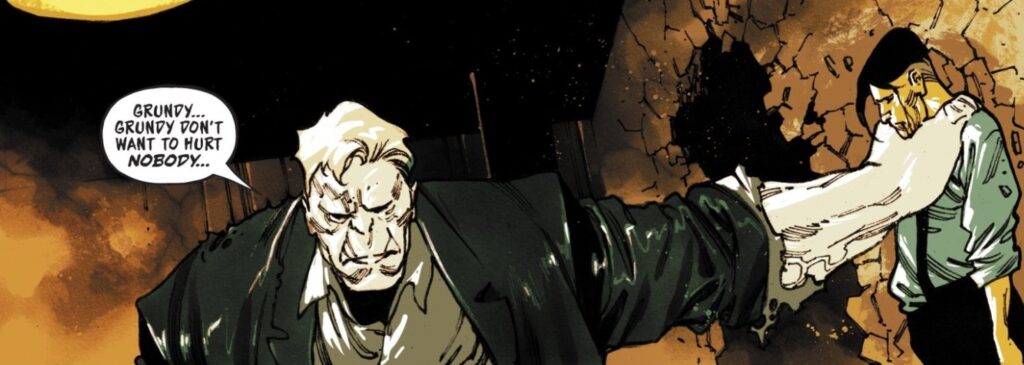
Nothing really, which is the point. If you look at the case of Grundy, for example, whatever process created him was already in progress long before Batman showed up and would have happened regardless. Grundy may have appeared after Batman (maybe), but he wasn’t drawn there by Batman. Batman didn’t cause Waylon’s skin condition or administer the serum that caused his appearance to continue altering. He didn’t drive the Ratcatcher into the tunnels.
Perhaps a better way of looking at it would be that the “wrongness” of Gotham – whatever it is that corrupts people and draws corrupted people, created the conditions that caused the need for Batman. And while he neither worsened nor solved it, he has at least proven capable of facing up to these threats in ways no one else has managed.
The Rogues Who Go Batty for Bats
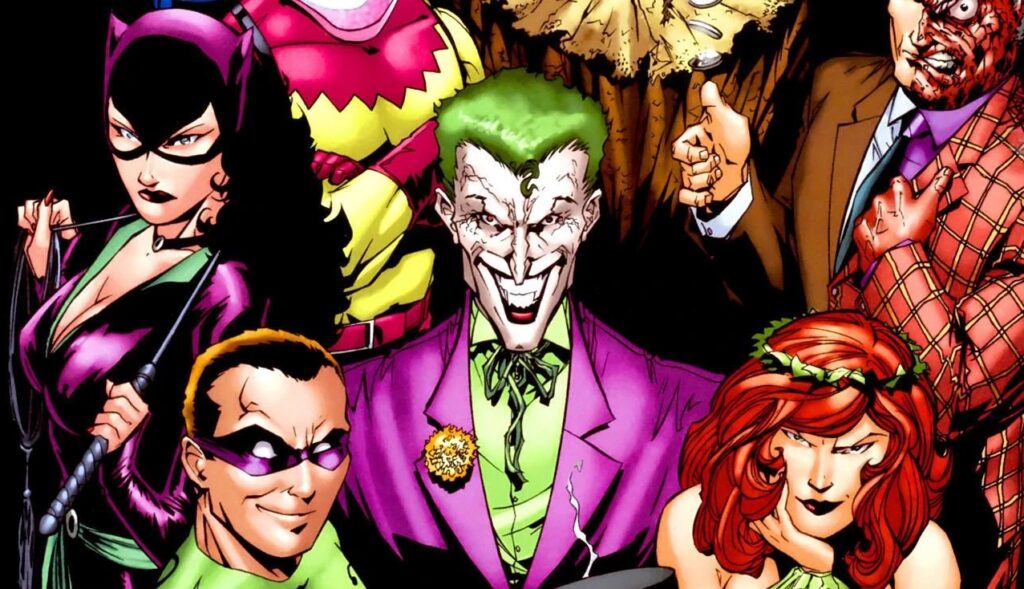
So far we’ve mostly looked at criminals and threats that act and exist independently of Batman’s presence. But there is another category – those who act up or come to Gotham specifically to engage with and/or challenge Batman… and that’s where the trickiness begins, as these are threats that he is responsible for whether directly or indirectly.
Now, I’ll be honest I expected there to be more of these than there turned out to be. But when I thought about it, the majority of the rogues gallery really consists of people who became Batman’s enemies because he came after them and their operation rather than the other way around. They were quietly doing their villain thing and Batman found out and stopped them. Most of them spend most of their time trying to dodge him.
That said, there are a few.
The Joker is the biggest, but he’s not the only one. Bane wouldn’t have come to Gotham from Santa Prisca but for his desire to challenge Batman, and he did it twice. We also have characters like The Riddler, who is often motivated by the intellectual stimulation of challenging Batman. Catwoman is at least partially motivated by drawing his attention.
Of these examples, and accepting that I may well be forgetting some, I think the biggest arguments that Batman has caused Gotham harm can be found in Bane and, of course, the Joker, and here’s why:
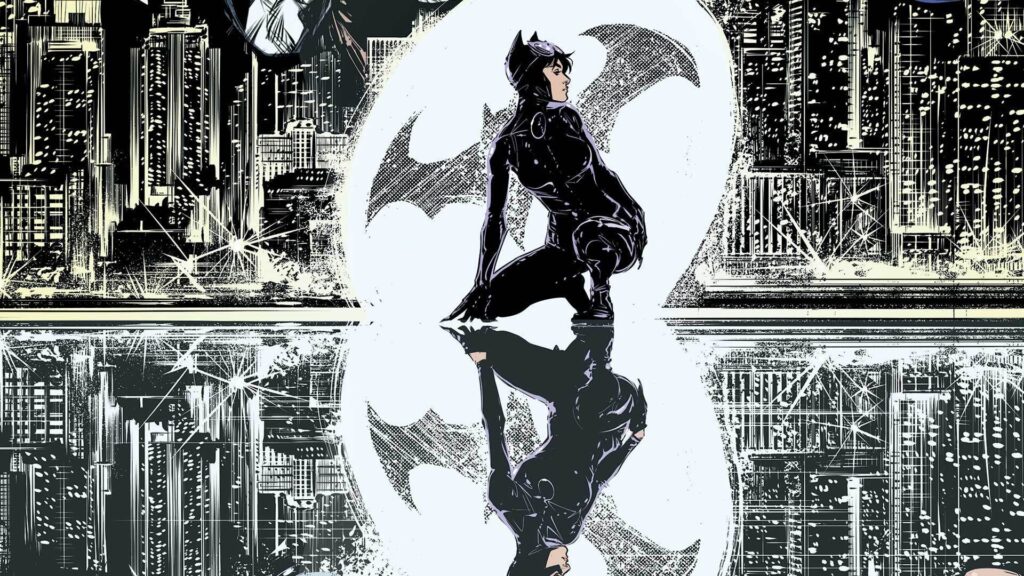
When it comes to Catwoman, Batman’s appearance may have given her the idea of dressing like a cat, and maybe her attraction to him makes her a bit more flagrant to draw him out, but Selina Kyle was a thief long before she put the Cat cowl on.
While Riddler has caused a good deal of tumult, traditionally he’s seen as less violent than his fellow rogues. This isn’t intended to discount the damage done by Selina’s burglaries, or Riddler’s… bizarre and elaborate traps, mazes and such. Still, while one criminal’s damage is difficult to quantify or weigh against another’s, if we’re looking at how much good Batman has done vs. how much trouble he’s caused, being a fraction of Catwoman’s motivation for burglary or arguably most of the Riddler’s motivation for whatever madness he’s doing is unlikely to override the good he’s done by dismantling even part of the corrupt government and law enforcement system in Gotham.
The bigger black marks by far come in the form of Bane and the Joker.
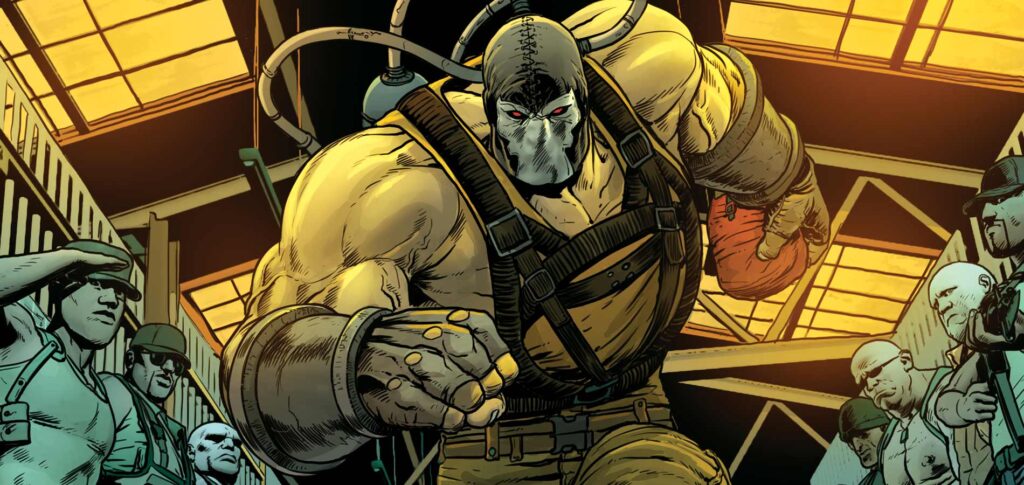
Bane is a complicated issue – much moreso than the Joker — because Bane’s damage to Gotham has leaned heavily on societal level PTSD – particularly in the wake of his recent takeover of Gotham City by way of metahuman mind control. The repercussions of that can be seen even into the current Batman run as the citizenry has become hypervigilant and paranoid. That’s not to say that he’s never caused physical damage, obviously, because he absolutely has. But I would argue that whatever physical pain or death he has inflicted ultimately falls short of the emotional carnage he has wreaked.
And Then There’s the Joker
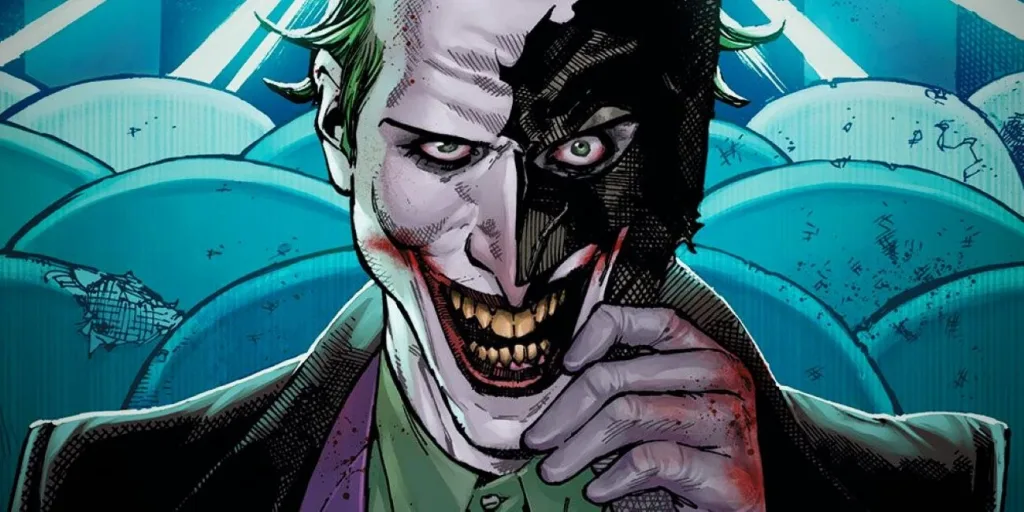
I could probably write a whole column about the Joker and the role he plays in the Batman mythos. There’s a reason he’s the most famous of Batman’s rogues. Every hero’s mythology could use a Joker – and I don’t mean a madman who destroys indiscriminately. Rather, I mean an absolute opposite to our hero. Everything about the Joker pings on the opposite end of a Likert scale vs. Batman – they are hot and cold, passion and intellect, order and chaos, monochrome and color, and to make it more even interesting, they violate the norms on which is which.
That said, one of the most important things about him is that technically Batman created the Joker. Because traditionally, the Joker was at one point a relatively normal person, right? Whether he was a down and out comedian, a petty criminal, a red mask wearing cult leader – whatever he was, he wasn’t this, not until he fell into that vat of chemicals during a confrontation with Batman and came out permanently changed.
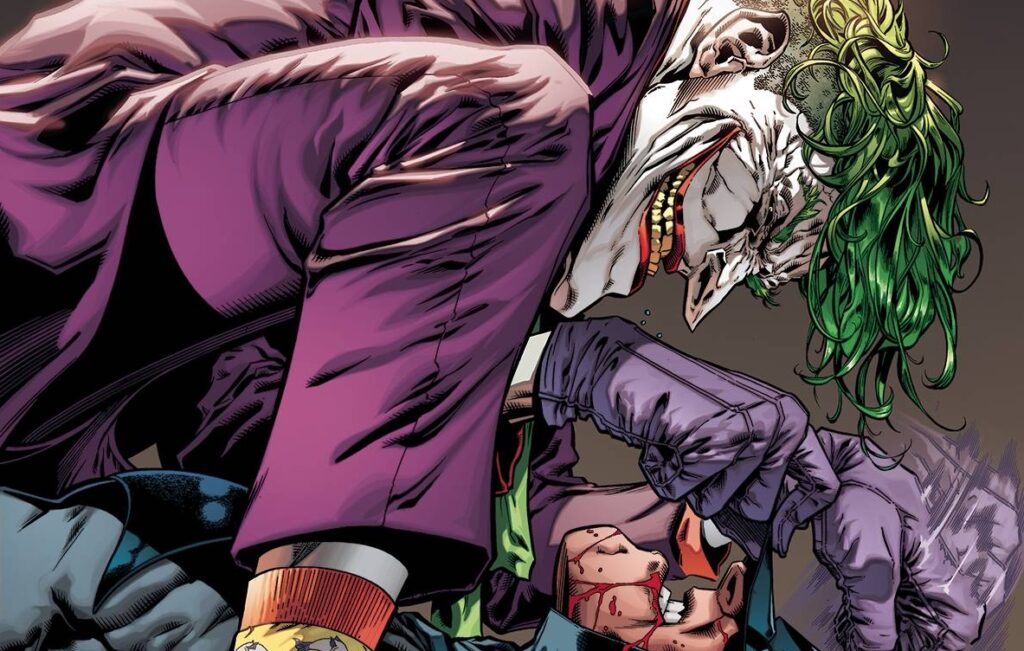
What I’m saying is, the Joker represents what happens when Batman makes a mistake. His existence is an eternal reminder to Bruce to be careful, and to not to make another one. But I think even more than that, from a meta perspective, the Joker is the shadow-side of Batman, the darkness that must exist to counterbalance Batman’s light. He is, in essence, the equal and opposite reaction to Batman’s action.
Now fortunately, the Joker’s singular focus is really on Batman – that’s part of their opposites theme as well, right? Batman has a wider view, oriented toward defense of the city – and the world – regardless of the cost to himself, whereas the Joker is quite myopic and focused wholly on one person. In that way, most of his damage is relatively contained, especially in recent years — at least until the Joker War. Still, if there is one thing that Batman has inflicted on the world that can be seen as a true indictment of his impact… it is the Joker.
The Other Side of the Story
Of course, no evaluation of the good or bad inflicted by Batman is complete without at least a (brief, very brief) look at the good he’s done… counting only his work as Batman and ignoring his ridiculously long list of charitable contributions as Bruce Wayne.
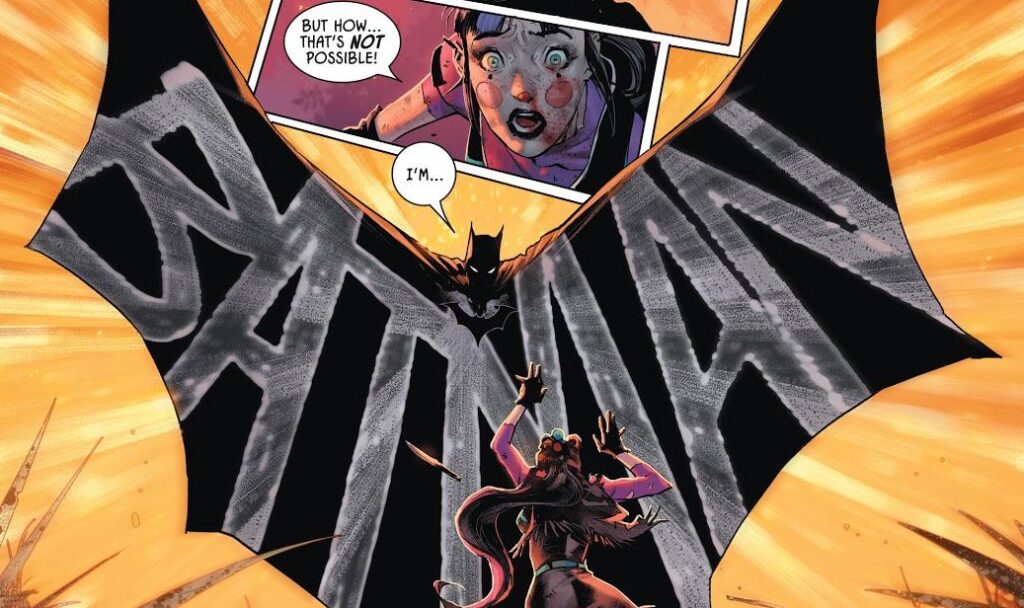
Frankly, most of it speaks for itself. Not only did he put the fear of the Bat into the criminal element and dismantle the corrupted power structure in Gotham, but he also manages to wage a war against the metahuman and supernatural elements of the city despite being, himself, “just” a man without powers.

He has assisted in the reformation of numerous enemies, with Clayface, Catwoman, Riddler, Harley Quinn, Two-Face and so on receiving second chances with his assistance be it direct or through inspiration alone… though whether it sticks or not can be something of a crapshoot.

His example – and his backup – has allowed justice-minded law enforcement officials such as Jim Gordon to get a foothold in the fight against corruption that would never have been possible without Batman’s expertise, skill set, and ability to work outside, or at least around, the law.
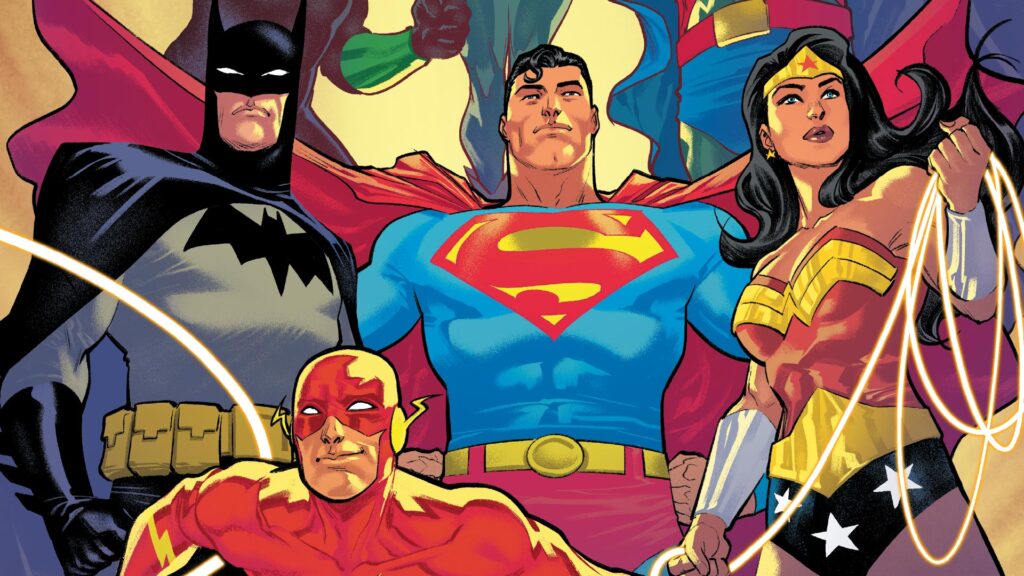
Batman is also a member of the Justice League and the founder of the Outsiders, and wholly or partially responsible for saving the city, the country, the world and beyond… multiple times… which counts as a plus for Gotham since Gotham is still on the planet Earth last time I checked.
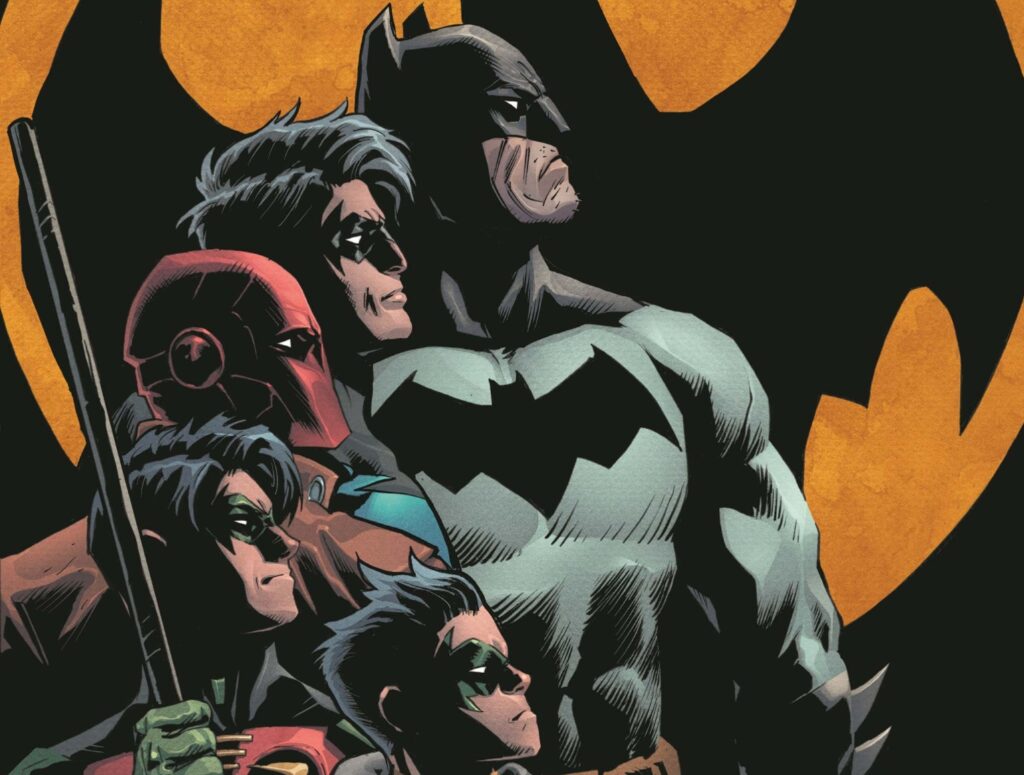
He has inspired, trained or mentored numerous other crimefighters as well, many of whom have gone on to make their own strikes against evil, join and form their own teams, inspire and mentor new generations. This is especially significant because if we consider counting the actions of people like Bane and the Joker against him due to his inspiration, then the actions of the infamous Batfamily should count in his favor, as he inspired and trained them, and often funded their headquarters and equipment needs. Those ripple effects can be immense. Consider how many times Dick Grayson helped save the world from annihilation or enslavement by Trigon, for example. Then realize that every other Robin has done the same thing to one degree or another, and at one time or another.
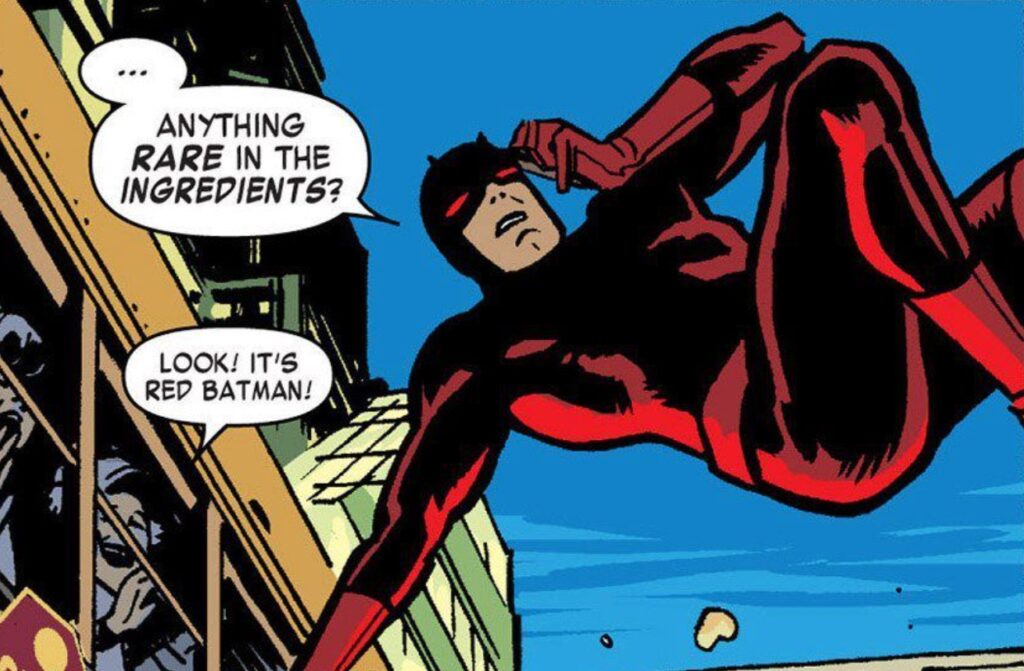
…also he’s probably good for tourism.
So… Is He?
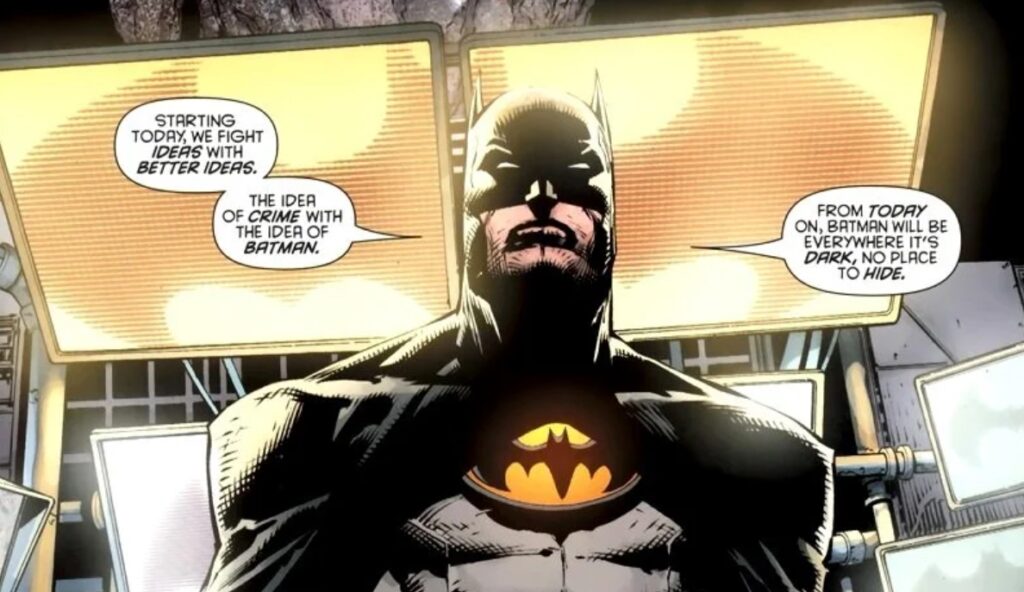
Okay, so is Batman harmful?
I think we can attack this question from a couple of different angles, putting aside that in-universe, the answer must be “no” just for the sake of preserving the conceit of superhero comics.
The first angle is… just as the question asks, does Batman cause harm to Gotham?
I think the answer is yes. He has inspired a good deal of freakish behavior and more elaborate crimes. His reputation brought Bane to Gotham City and, ultimately, he is at least partially responsible for the existence of the Joker, at least in the form we know him.
However, I think the answer is also and primarily no. He has improved the justice system of Gotham, freed the city from de facto mob rule, brought down dangerous men and monsters both natural and supernatural, and inspired a generation of fellow crime fighters to do the same all while saving the world in his spare time.
Moreover, this angle also begs the question of how much Batman can really be held responsible for the actions of the madmen who turn up in his wake. If Riddler is in search of a challenge, would he really have been content to do nothing if Batman hadn’t turned up? Wouldn’t he just go somewhere else and bother someone else like Lex Luthor or Mr. Terrific? As for the Joker, if you accidentally hit someone with your car and they survive but suffer a traumatic brain injury that changes their personality such that they end up becoming a serial killer… did you do that? You may feel guilty for creating that circumstance, but, realistically, is it fair to say it’s your fault?
I would say that it isn’t, but also that it’s human nature for both you and the people who are affected by the accident or its fallout to feel as though it is. It’s also natural that such people (including you) may blame you… regardless of how unreasonable that might be.
So, long story short, while I would suggest that his presence has been far more positive than negative… it’s still complicated. And frankly probably more so for people in Gotham than anywhere else, since they don’t have the luxury of looking from outside the situation and evaluating things objectively. As such, it’s hardly surprising when a story features police, civilians, etc. who have negative feelings about him or who can’t see the good he’s done for the bad that has affected them personally.
That said, there’s also another angle to consider.
If I may momentarily dip into the Doylist/external to the world perspective here… Gotham gets more scrutiny for having freaks and monsters than most DCU locations, and there is an in-universe explanation for that, of course. That said, there’s also the reality that a great deal of weird stuff happens in Gotham simply because it’s in the DCU and lots of odd things happen in the DCU.
It’s easy to perceive the rogues as being created by Batman in some form because they appear after him but, realistically, they appear after him because we don’t enter the story as observers until he appears. That doesn’t mean these things weren’t already happening – much like Solomon Grundy was already gestating before Bruce Wayne was born, Oswald Cobblepot was already making his way through the ranks of organized crime before Batman showed up. Selina was already stealing. Even the Joker, in most of his origins, begins as a criminal – that’s why he was fighting Batman to begin with when he fell into that vat.
I think the fact that Batman’s world is relatively grounded can trip people up in this area, not unlike women fighting in high heels bothers readers more than people flying: it’s a little too close to normal for people to just accept that it’s not going to work by the same rules as our world. And yet, in the end, it’s still true and just like Jessica Fletcher running into a lot of murders doesn’t mean she caused the murders to happen, Batman having a lot of crime to fight doesn’t mean Batman is causing the crime.
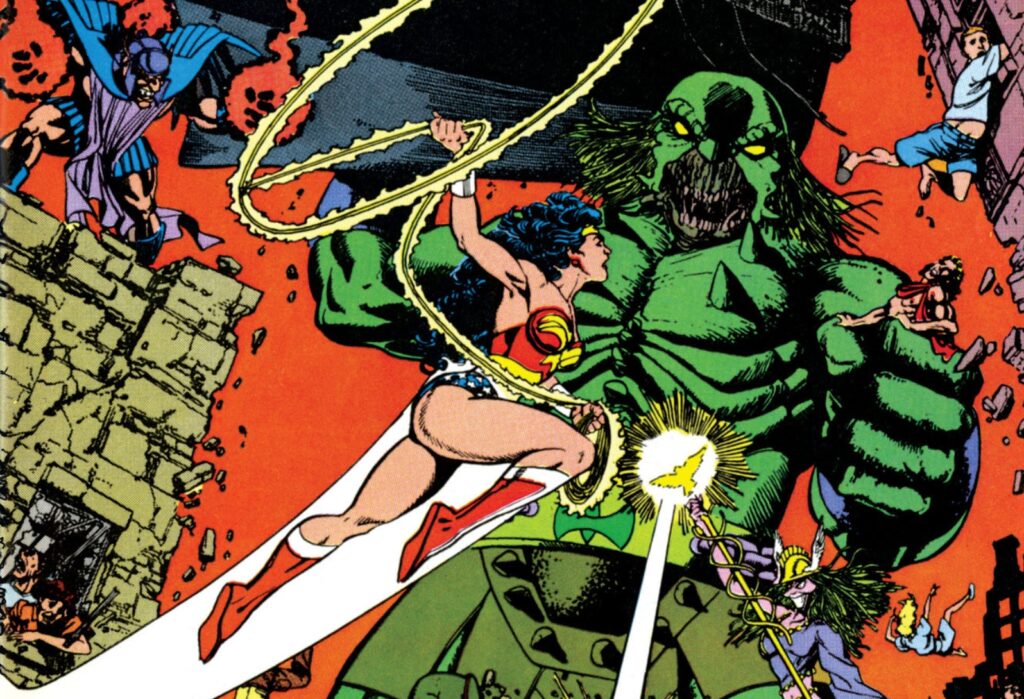
Consider how many mythological monsters attacked Boston during Wonder Woman’s stay there in the 80s, or the fact that Superman’s arrival apparently triggered Lex Luthor into becoming a supervillain. Extraterrestrial threats sure hit up Metropolis often… you know? In other words, some of it is just about accepting that the DC Universe is, for obvious narrative reasons, simply a much more dangerous place than the real world.
And here I will take a moment to directly quote a friend who helped me through writing this column when I was blocked.
If you get into the meta of it, (this is) also the reason why Gotham can’t ever truly be fixed: because then the story would have to end, and comics don’t end. Which means that the real answer to who is worst for Gotham is us, the readers. (localskeletons @ twitter)
And that, ladies, gentlemen and others, is a long, long overdue wrap.
Next time on The Longbox View… More words! Bear with me, things are slower on my end for various reasons, but I’m still working on all the things I already meant to do, plus some other things, as well. But I’m going to learn my lesson and shut up about the specifics for now, because that is the only rational thing to do.
Until then, stay safe and keep reading!
ARIEL BEE IS… An Old Person. A Comics reading veteran. Mostly involved with DC and indies but happy to go on the occasional Marvelous Mission into the unknown. An analytical overthinker. Also found as a reviewer on Comics-Watch and Twitter @thearielbee.




